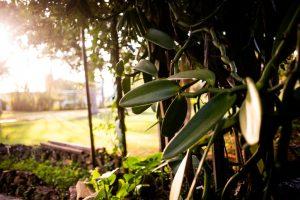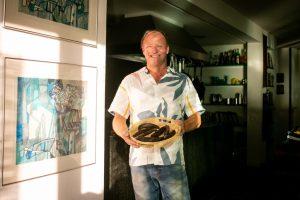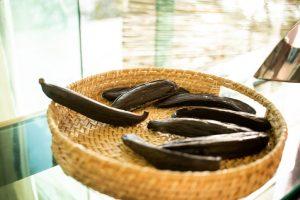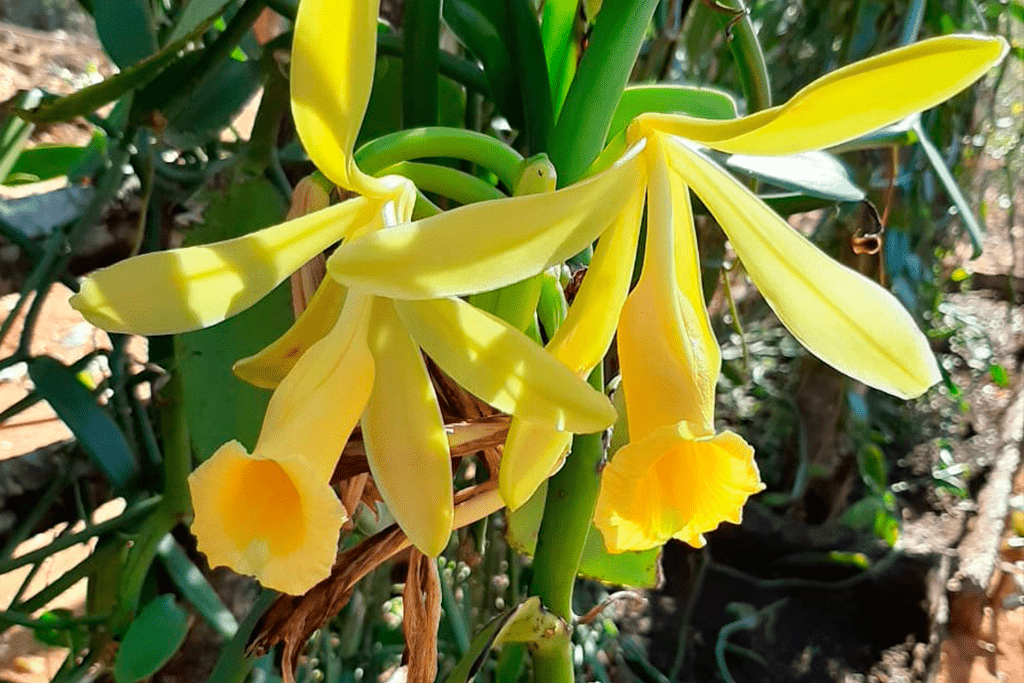The Brazilian flora has gifted us with native vanilla, also known as banana vanilla, which is found in riparian forests in the Brazilian Center-West region and practically all over the country. Three species are regarded as of current economic value or potential use: Vanilla bahiana, Vanilla chamissonis, and Vanilla pompona. Vanilla bahiana is widespread in the Southeast and Northeast regions. Vanilla chamissonis has a broad geographic distribution in Brazil, from the extreme east to the extreme west, and is present in the country’s five regions.

Vanilla pompona, known as Cerrado vanilla or banana vanilla, is currently known in the Southeast, Northeast, Center-West (or Midwest), and North regions and has been drawing attention for its gastronomic value. It comes from beautiful yellowish orchids with giant pods compared to the African ones. The pod, the orchid’s fruit, is the spice in question. It can reach up to 25cm (approximately 9.84 inches) in length and has an elongated shape, hence the allusion to the banana. When raw and while still on the tree, it has an oily surface.
For at least ten years, Danish chef Simon Lau, who has lived in Brasília since the 1990s, has been researching methods of use and growing and has introduced the Cerrado vanilla as an ingredient in high gastronomy. The chef says he has been experimenting with the spice in his home for at least ten years and is still surprised by its many possibilities. “In my restaurant, I only use native vanilla,” he explains, citing fish in creamy vanilla sauce and pork with cagaita (Eugenia dysenterica, a local citrus fruit) jelly and vanilla.

Research development
Lau follows and takes part in recent studies on the Cerrado vanilla. In recent years, the Brazilian Agricultural Research Corporation (EMBRAPA) has been developing research through the gathering of data and technical information in order to fill the gap regarding Brazilian species.
Last year, EMBRAPA’s Genetic Bank, one of the five largest repositories of its kind in the world, received its first collection of Vanilla orchids (more than 70 samples), thus becoming the first germplasm bank of vanillas in Brazil and the only in the world to gather a significant volume of species from South America.
The collection will offer essential benefits, such as supporting genetic improvement by providing genes of agronomic interest, subsidizing the domestication of vanilla in Brazil—where production still has an extractivist aspect—, and even assisting in the preservation of its species.

Potential market
To encourage producers, EMBRAPA has been holding workshops aimed at providing technical knowledge while gathering and learning about the professionals who work with the species. With this, scientists intend to help introduce native types of Brazilian vanilla into the market, expanding their supply and enabling the addition of value to the local products and the development of rural communities that produce these raw materials.
Scientists believe that local species have interesting and different characteristics compared to those in the international market and that, precisely for this reason, they have the requirements to meet the demands of high gastronomy.
Currently, Madagascar is the world’s largest producer of vanilla. The types commonly found there are Bourbon, Mexican vanilla, Tahitian vanilla, and West Indian vanilla. Of the varieties available in the market, Madagascar’s is the most used, dominating more than 70% of the international market, while the remaining types come from Tahiti and Mexico.


